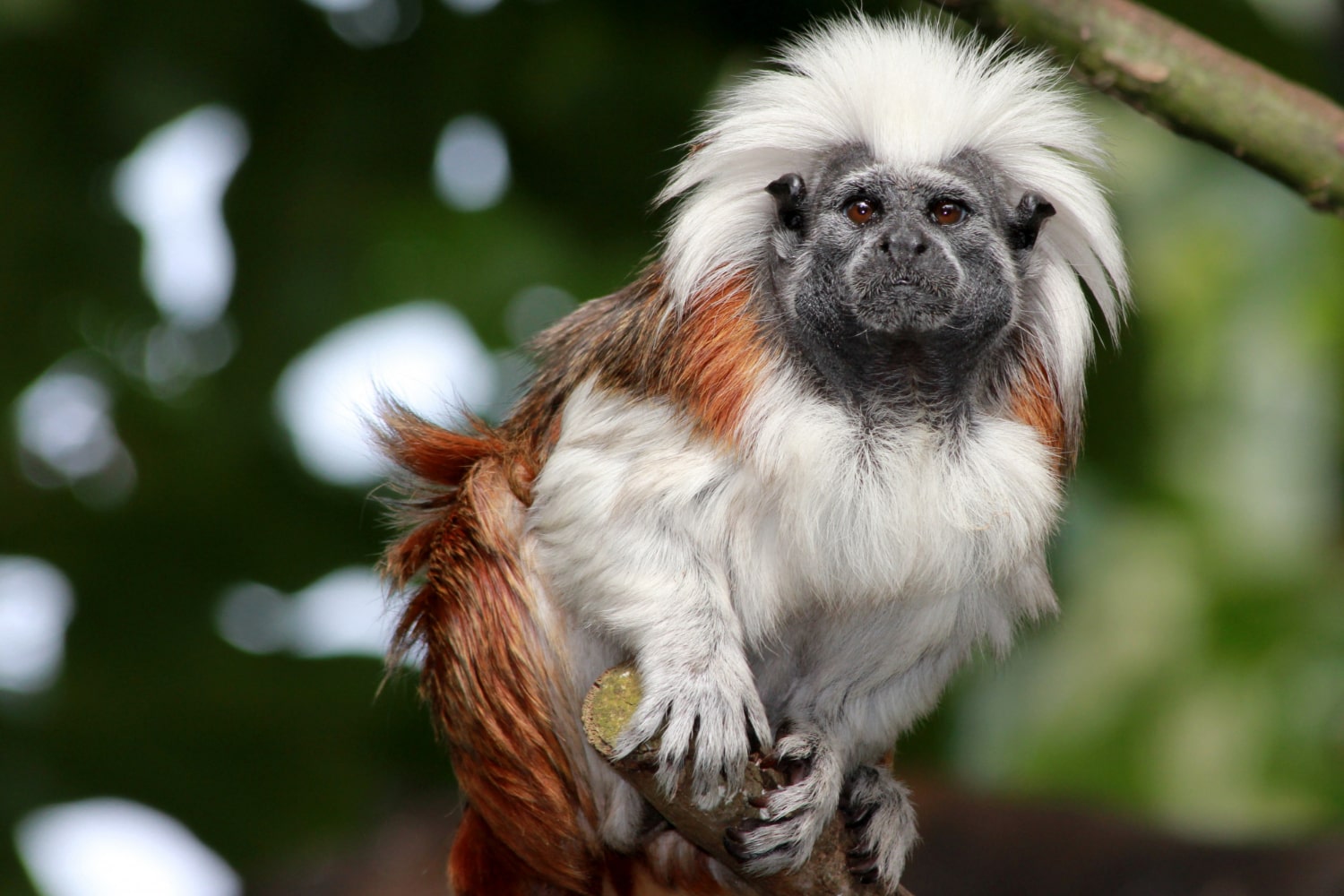Tamarins are small but highly distinctive members of the marmoset family that live in the tropical forests of Central and South America. Their appearance is so diverse and unusual that many people compare them to characters from fairy tales. These tiny monkeys attract attention not only with their size and brightly colored fur but also with their unique behavior. Scientists and researchers take a particular interest in them because they have many traits you may not know about. Below are the most fascinating facts about these remarkable animals.
- Tamarins are among the smallest primates in the world, with a body length usually ranging from 13 to 30 centimeters, and their tail is often longer than their body. An adult typically weighs less than 600 grams. Despite their small size, they are highly agile and quick.
- There are over 20 known species of tamarins, the most recognizable of which are the emperor tamarin, the golden lion tamarin, and the cotton-top tamarin. Each has its own distinctive appearance and fur coloration, making them easy to distinguish in the wild. Different species occupy their own ecological niches within tropical forests.
- Tamarins inhabit tropical rainforests, mangroves, and sometimes forest edges, avoiding open spaces. They thrive in dense tree canopies and rarely descend to the ground. Their lives are almost entirely connected to the arboreal environment.
- A tamarin’s tail is not prehensile, unlike that of some other primates, but it plays an important role in maintaining balance during jumps. This enables them to move quickly and precisely among the branches. Without their tail, they would lose much of their agility.
- The diet of tamarins is highly varied and includes fruits, nectar, insects, small vertebrates, and even bird eggs. This omnivorous habit helps them survive seasonal changes in tropical forests. They also play an important role in dispersing plant seeds.
- The social structure of tamarins is based on small groups, usually ranging from 2 to 15 individuals. In many cases, a dominant female leads the group and decides when and where to forage. This organization helps avoid conflicts and increases the chances of survival.
- A unique feature of tamarins is that the male and other group members actively participate in raising the young. The father often carries the babies on his back, passing them to the mother only for feeding. Such behavior is very rare among primates.
- A female tamarin usually gives birth to twins, although single or triplet births can occur. The newborns are fully furred and have their eyes open at birth. They quickly learn to cling to their parents’ fur and move with them.
- Tamarins communicate through a variety of sounds, facial expressions, and scent markings. Their vocal signals can warn of danger or call other group members. Scent markings help define territory and avoid conflicts with other groups.
- Because of their small size, tamarins have many natural predators, including snakes, birds of prey, and small carnivorous mammals. To avoid danger, they rely on group vigilance and rapid movement. When threatened, the group often scatters quickly in different directions.
- The emperor tamarin got its name because of its long white mustache, which resembles portraits of German Emperor Wilhelm II. This distinctive trait makes it one of the most famous species among exotic animal enthusiasts.
- The golden lion tamarin is considered one of the most beautiful primates due to its bright reddish-orange or golden fur. This species has become a symbol of wildlife conservation in Brazil, where its population has declined significantly. Efforts to restore its numbers include breeding programs in zoos and reintroduction into the wild.
- In the wild, tamarins typically live about 10 to 15 years, while in captivity they can live up to 20 years. Their lifespan depends on habitat conditions, food availability, and the absence of predators.
- Tamarins have relatively sharp vision and excellent hearing, which help them find food and detect danger in time. They are also adept at navigating the complex structure of tropical trees.
- These primates play an important role in maintaining the balance of tropical ecosystems. They help pollinate certain plants, disperse seeds, and are part of the food chain for larger predators.
- Unfortunately, many tamarin species are endangered due to deforestation and hunting. Their habitats are shrinking, making the protection of tropical forests a critical task. Conservation programs include establishing reserves and running educational campaigns.
Tamarins are unique creatures whose lives are full of interesting and remarkable moments. By learning fascinating facts about these small primates, we better understand their importance for nature and the preservation of ecosystems. They display complex social bonds, impressive adaptability, and care for their young. Protecting these remarkable animals will help preserve not only them but also the entire world of tropical forests in which they live.





